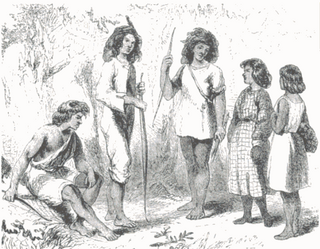The Siletz are a nearly extinct tribe of Native Americans from Oregon. Siletz may also refer to:
The Siletz are a constituent band of the Confederated Tribes of Siletz Indians, and the group from which the confederation received its name. In 1856 following the Rogue River Wars in southern Oregon, people from among more than 27 Native Tribes and Bands, speaking 10 distinct languages: Clatsop/Chinook, Kalapuya, Tillamook, Molala, Alsea/Yaquina, Siuslaw/Lower Umpqua, Coos, Shasta, Takelma, and a broad group of Athapascans speaking groups of SW Oregon, including Upper Umpqua, Coquille, Tututni, Chetco, Tolowa, Galice and Applegate River peoples who by treaty agreements and force were removed by the United States to the Coast Indian Reservation, later known as the Siletz Reservation.
- Confederated Tribes of Siletz Indians, a federally recognized tribal entity from the U.S. state of Oregon.
The Confederated Tribes of Siletz Indians in the United States is a federally recognized confederation of more than 27 Native American tribes and bands who once inhabited a range from northern California to southwest Washington, and between the summit of the Cascades and the Pacific Ocean. The peoples removed to the Siletz or Coast Indian Reservation spoke 10 distinct languages, with Tillamook from the Coastal Salishan family but also including the Clatsop/Chinook/Clackamas, Kalapuya, Molalla, Yaquina/Alsea, Lower Umpqua/Siuslaw, Coos, Takelma, Klickitat, Athabaskan language of the Tolowa, Tututni, Chetco, Coquelle, Upper Umpqua, Galice Creek, Euchre Creek, Applegate River peoples Shasta, of southern Oregon and northern California, more than 2700 of whom were removed here by the federal government after the Rogue River Wars.
- Siletz Reservation, an Indian reservation in Oregon, home to the Confederated Tribes of Siletz

The Siletz Reservation is a 5.852 sq mi (15.157 km²) Indian reservation in Lincoln County, Oregon, United States, owned by the Confederated Tribes of Siletz. The reservation is made up of numerous non-contiguous parcels of land in east-central Lincoln County, mostly east of the city of Siletz, between it and the Polk County line..
- Siletz Bay, a body of water in Oregon.
- Siletz, Oregon, a city in Oregon.
- Siletz River, a river in Oregon.
- Siletz River Volcanics, a formation of Eocene volcanic deposits on the Oregon coast.
- Siletz terrane: Siletzia, a tectonic terrane that forms the geological basement under northwestern Oregon, southwestern Washington (state), and the southern tip of Vancouver Island.

Siletz is a city in Lincoln County, Oregon, United States. The population was 1,212 at the 2010 census. The city is located next to the Siletz Reservation and is the site of the annual Nesika Illahee Pow Wow in August.

The Siletz River flows about 67 miles (108 km) to the Pacific Ocean through coastal mountains in the U.S. state of Oregon. Formed by the confluence of its north and south forks near Valsetz in Polk County, it winds through the Central Oregon Coast Range. The river, draining a watershed of 373 square miles (970 km2), empties into Siletz Bay, south of Lincoln City in Lincoln County. Although the river travels 67 miles (108 km) in river miles, its winding course begins only about 20 miles (32 km) east of the ocean, and its mouth and source latitudes are almost identical.

The Siletz River Volcanics, located in the Oregon Coast Range, United States, are a sequence of basaltic pillow lavas that make up part of Siletzia. The basaltic pillow lavas originally came from submarine volcanoes that existed during the Eocene.
| This disambiguation page lists articles associated with the title Siletz. If an internal link led you here, you may wish to change the link to point directly to the intended article. |



